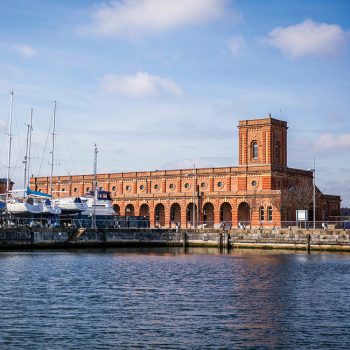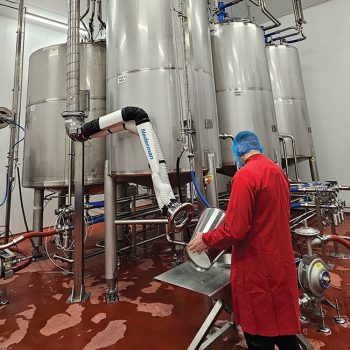How has the alcohol duty hike impacted the UK?
A large increase in alcohol duty is making life difficult for UK drinks brands already coping with a cost-of-living crisis, but especially for spirits producers.

*This feature was originally published in the February 2024 issue of The Spirits Business magazine.
In August 2023 the UK government imposed the biggest rise in alcohol duty for the past five decades, casting a formidable shadow over the UK spirits industry. In raising alcohol duty by 10.1% RPI in line with inflation, ending a spirits tax freeze introduced in the October 2018 budget, the Treasury also completely restructured the way in which duty is calculated, for the first time making it dependent on strength.
For spirits, a 37.5% ABV bottle now costs 77p more (a 10% increase), with £8.31 of every bottle sold made up of tax, according to the latest figures from the Wine and Spirit Trade Association (WSTA).
Fortunately, UK chancellor Jeremy Hunt did not impose a second hike in his 2023 autumn statement on 22 November, which would have amounted to a cumulative duty rise of £1.50 on every bottle of spirit. Instead, alcohol duty was frozen until August 2024. A silver lining, perhaps, but following a pretty hard blow.
All of this comes at a time when producers are already battling extraordinary inflationary costs and increasing supply chain and manufacturing charges. While the changes might seem like a simplification of the system, for spirits producers, who are more legally tied to ABVs than other brands, it has created a fresh set of challenges. Six months on, how is the spirits industry navigating these challenges, and are there any opportunities to be leveraged?
Higher prices seem inevitable, which is likely to slow consumer spending, with increasing pressure on producers to balance their margins and production costs following an already torrid few years. “There had already been a lot of cost pressures across the industry, which had led to prices increasing at a faster rate than normal, so the timing was really unwelcome,” says Jason Hockman, business unit director for e-commerce retailer Master of Malt. “We had to keep a close eye on market pricing to ensure we remained competitive. We worked hard to forward buy as much stock as possible to put cash in our suppliers’ pockets and to reduce the impact of the price increases.”
Production reduction

Almost two-thirds (61%) of UK distillers say they expected to reduce production due to a rise in spirits duty, according to a survey by the UK Spirits Alliance – which represents more than 280 small and independent UK distilleries. Nearly half (43%) said the duty rates would hit their staffing levels. “The duty increases simply pile on another barrier to building our business,” adds Stephen Russell, CEO of the Copper Rivet Distillery in Kent, which is focusing on building demand overseas to mitigate some of the impact. “With inflation hitting consumers hard, the government has added to it by making their craft gin and tonic, or their handmade, small batch whisky more expensive. This creates a demand challenge for us; we have to run at 120 miles an hour just to stay still.”
Until all pre-August stock subject to the old duty system has been sold, it’s difficult to assess the full impact of the changes, but Christmas and new year sales are already giving a good indication of the effects of the duty increases, especially when compared with expenditure on other goods over the same period. Miles Beale, chief executive of the WSTA, says: “While some businesses tried to delay passing on the new duty rates to consumers immediately from 1 August, sales data for the months following the duty increase showed that wine and spirits sales were down year on year, suggesting a direct link between the duty rises and reduced consumer spending.”
The WSTA reported a “steep downturn” in spirits sales in the UK off-trade amounting to a 20% drop during November 2023. Data from NIQ (Nielsen) showed a decline in value sales of beers, wine and spirits for the week ending 23 December 2023 compared with the same time in 2022, with Champagne down by 5.8%, Port by 4.3%, sparkling wine by 2.7%, and spirits by 2%. This was despite record-breaking grocery sales, which saw a 4.3% uplift, reaching £4.8 billion (US$6.1bn).
For spirits, inflation sits at 8.9%, compared with 3.9% a year ago, according to the WSTA. “The latest sales stats show better-than-expected grocery sales – except for alcohol, which have fallen,” adds Beale. “This is further proof that the government must do more to support the wine and spirits trade to boost economic growth.”
While rising duty rates continue to exert financial pressure on producers, the real game changer is how duty is now calculated, with stronger drinks taxed more. The sliding scale sees duty increase at ABVs of 1.3%, 3.5%, 8.5% and 22%. This means producers of drinks that can adjust their ABV more easily – like beer, cider and, to some extent, wine – have some flexibility to avoid higher rates.
For spirits producers higher rates are unavoidable. Spirits are also excluded from receiving small producer relief, applicable only to those making products with an alcohol by volume (ABV) of less than 8.5%.
Patrick Fisher, market analyst at IWSR, says: “In addition to higher prices, which are likely to suppress demand further at a time when many categories are already suffering due to the current cost-of-living crisis, the other most tangible effect of the changes is that they may encourage the introduction of lower-alcohol products. Many brewers have already opted to reduce the ABV of their beers, rather than implement unpalatable price increases in an already difficult marketplace. Many wine producers are also looking at options to reduce the ABV of their products, rather than foisting higher prices on increasingly price-sensitive shoppers.”

There are some corners of the spirits industry that could benefit, or at least remain unscathed. While minimal, duty paid on a 17% ABV bottle of cream liqueur reduced by 1%, fell by 3p per 700ml bottle. More significantly, RTDs saw duty paid on a 5% ABV 250ml can fall by 14%, or 5p per can. Whether that will translate into lower prices for consumers remains to be seen, given that for some time producers and suppliers have been battling higher production and labour costs. “The duty hike has not had a detrimental impact on price points in this category, unlike other alcoholic beverages with higher ABVs,” says Caleb Simpson, managing director of Simpsons Beverages, which develops and manufactures flavours for the spirits industry. “However, I believe this is just one factor that’s fuelling demand. Other key drivers, include the rise of mindful drinking, the convenience offered by RTD cocktails, and the competitive price point of single-serve cans and bottles appealing to today’s price-sensitive consumers.”
Low and no growth
The changes to duty might favour lower-ABV beverages, which could support their further growth. Beale says any success will be down to consumer demand rather than tax changes. “There is little evidence to suggest fiscal measures drive behavioural change,” adds Beale. “The low- and no-alcohol products on the market reflect the demands of consumers who are looking to drink differently or drink less alcohol. We think those same consumers are still likely to drink alcoholic drinks, choosing to moderate their alcohol intake using either low/no alternatives or, more likely, traditional soft drinks.” Many spirits producers have, of course, already ventured into making non-alcoholic versions of their higher-strength spirits, and RTDs are part of most producers portfolios. Increasing duty on higher-strength beverages won’t solely drive growth of no/low beverages, but it does give producers a reason to diversify into the category.
Will higher prices drive consumers to spend less but better? Hockman is seeing premiumisation from Master of Malt’s customers, who are buying “slightly less frequently” but spending more when they do. But he agrees that less disposable income means they are more likely to “gravitate towards buying the things they know and like, which reduces opportunities for exploration of new brands, formats and categories”.
Russell believes that instead of driving premiumisation, rising prices could see consumers, and also hospitality buyers, trade down, which could prompt producers to cut production and new product development, reducing consumer choice and quality, potentially leading us back to a world where we only have “cheap, mass-produced spirits to choose from”, he says. “UK spirits are heavily linked to the fortunes and sentiments of the overall economy,” adds Russell. “If people feel good, and are confident about their future, the industry will do well. If there’s uncertainty and other wider hiccups, it will be harder. We face an election year in both the UK and US, continuing war in Ukraine and Israel/Palestine, plus the interruptions in the supply chain from the Bab al-Mandab Strait – so it remains to be seen whether the UK consumer can shrug off the uncertainties that arise from those factors and, any other shocks that might arise.”
Some producers might see the benefit in diversifying into the lower-ABV space, if only to cover their bases and expand their portfolios. But 2024 is likely to be (another) year of careful planning for the UK spirits trade, with many aiming to simply survive, rather than thrive.
Related news
Cocktail stories: Speed Bump, Byrdi
